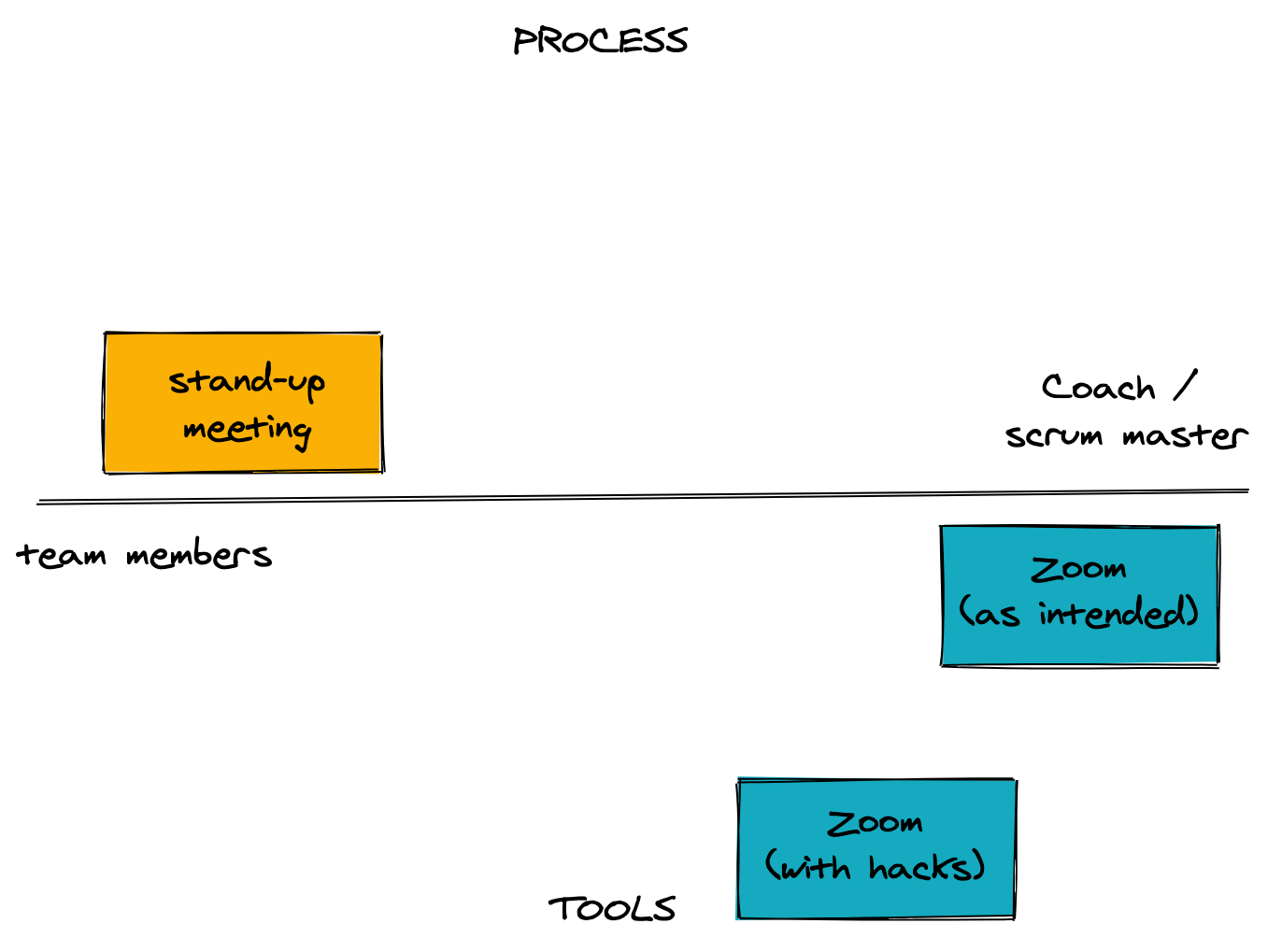As people moved to completely online and distributed work in the early part of 2020, interesting patterns in training and collaboration tools emerged. While many trainers have focused on tools and process and the best way to keep teams connected online, it seems we slipped into a control trap for teams.
Stand-up Meetings vs Meeting Tools
For instance, let’s consider the tool that has dominated online collaborative meetings since the pandemic started: Zoom. Also, let’s consider a very simple process for a team to collaborate and self-manage their work: the stand-up meeting. If we look at where control lies for this combination of process and tool, it may look like the following figure.

If you are not familiar with stand-up meetings, they are short meetings where a team coordinates on how work is progressing to meet a short term goal. Team members often refer to a board or tracking tool to see how individual pieces of work progress to meet the goal. Team members also seek out how to help others complete their work so the team can meet their goal. Stand-up meetings represent just one self-managing process within an agile team.
Unfortunately, the team rarely controls a tool like Zoom. Typically, one person holds the Zoom license and that primarily determines who controls the meeting.
There are “hacks” for Zoom meetings where hosts promote participants to co-hosts who then can help organize the meeting. But it’s too cumbersome for a simple meeting like a stand-up meeting.
Tool Options for Stand Up Meetings Online
There are other choices as shown in the next figure. Note that Zoom sits near it’s predecessors (WebEx, GoToMeeting and Adobe Connect) on this control spectrum. Zoom provides wonderful features, but the control rest firmly with the meeting owner. Some tools such as Video Facilitator and Whereby give more control to the participants.

You may notice that meeting tools like Google Meet and Slack Video meetings tend to lie near the same side of the control spectrum as the process of a stand-up meeting. Teams typically control the stand-up meeting to control their work. Similarly, any team member starts or stops a Google Meet and Slack Video meeting.
So what?
Successful distributed teams control process and tools (as Johanna Rothman and I stated in our book.)
With the mass movement of many teams going online over the first half of 2020, we (again) are falling into a trap of confusing a “common practice” with a “best practice” for our context.
Self-managed group processes and Support Tools
As more free and low cost training mushroomed to support this mass migration to online work, we see a number of self-managed processes like Open Space Technology, Liberating Structures, and Agile Team Processes. It tends to look like the following:

Now notice how the most popular meeting technology (Zoom) lies on the opposite end of this control spectrum from many of the processes being taught online today for remote teams.
We need to rethink how we apply technology solutions to the practices and process we want to use for remote teams.
I’m still exploring this approach and will share more in future blog posts and my newsletter. Please reach out through comments on the post or contact me with questions.


Member discussion: